Tantris owners the Eichbauer family are in the construction business. Fifty years ago, the company founder, Fritz Eichbauer, used to drive regularly to Alsace to eat at fine dining restaurants in France as at that time there was no equivalent in Munich. In 1971 he decided to rectify this by setting up his own restaurant, in a modern concrete building that used to house a nightclub. His son Felix Eichbauer now owns Tantris. The striking modern building is listed, built by architect Justus Dahinden. Tantris rose to culinary prominence under initial head chef Eckart Witzigmann, who worked at Tantris for seven years. He gained a Michelin star for Tantris in 1973, and a second in 1974 before he moved on to his own restaurant in 1978. As an aside, Mr Witzigmann became the first chef to gain three Michelin stars in Germany at his next restaurant Aubergine in 1979, before being convicted in 1993 for cocaine possession. In 1978 Tantris gained the gifted Heinz Winkler as head chef, and was awarded three Michelin stars in 1981, with Mr Winkler at the time being just 32. Mr Winkler was at that moment the second youngest ever chef to achieve this accolade for a restaurant after the (also 32 year old but four months younger) Herbert Schönberner at Der Goldene Pflug in Chiemgau, though years later Massimiliano Alajmo achieved the same at the age of 28 at Le Calandre. Incidentally, some of the English-speaking press mistakenly credits Marco Pierre White with being the youngest “three-star chef” (technically the award goes to the restaurant and not the chef) but this was never true; Mr White was 33 years old in 1995 when he got the third star. Heinz Winkler (RIP in 2022) eventually moved on to his own restaurant, and Hans Haas took over as head chef of Tantris from 1991 to 2020, retaining two Michelin stars for the restaurant during his tenure before he retired. In 2022 the culinary reins were handed over to Benjamin Chmura. Mr Chmura trained at the Paul Bocuse culinary institute in Lyon before working for five years at Troisgros, being head chef there since 2019, and previously working at Auberge de l’Ill in Alsace.
The wine list had 1,593 labels and ranged in price from €50 to €15,900, with a median price of €220 and an average markup to retail price of 1.5 times, which is wildly generous by the standards of most restaurants. Sample references were Jean Marc Roulot Aligote 2019 at €60 for a bottle that you can find in the high street for €140, Maximin Grunhaus Riesling Riesling "Herrenberg" GG 2018 at €95 compared to its retail price of €66, and Domaine de Trevallon les Baux 2012 at €125 for a wine that will set you back €155 in the high street. For those with the means there was Vega Sicilia Unico 1983 at €800 compared to its retail price of €1,406, and Emmanueal Reynaud Chateauneuf du Pape Rayas Reserve 2009 at €990 for a wine whose current market value is €2,103. The wine cellar has around 30,000 bottles in total, half stored on site. This is a real joy of a wine list.
The dining room is in the ground floor, next to a bar area, with the somewhat more casual but still Michelin starred restaurant Tantris DNA adjoining. There is also a terrace available for drinks when the weather is fine. The dining room has large, generously spaced tables with neatly ironed white linen tablecloths. Tasting menus of six courses (€275) to eight courses (€375) were available at dinner, with a shorter four course menu at lunch only at €150.
There was an extensive selection of canapés. A caramelised onion crisp in a leaf shape contained an onion filling with quite deep flavour, the pastry coating being very delicate. A modern take on a mushroom sandwich contained a ragu of mushroom flavoured with sweet Pedro Ximenes sherry, which went well with the earthy flavour of the mushroom. A spinach crisp contained a lovely herb bavarois. There was also a polenta tartlet case with a filling of wild salmon with radish and sorrel cream, perhaps a nod to the classic salmon and sorrel dish invented at Troisgros. Polenta is not an easy ingredient to excel with, but the tartlet case was very delicate. Beetroot crisps contained cheese and a ginger jelly, the earthiness of the beetroot nicely enhanced by the aromatic ginger and being a very good foil for the cheese. Crab salad came with caviar in another delicate casing. These were seriously classy canapés (19/20).
Breads are all baked in house, the first to make an appearance being a classic baguette. The first formal dish of the menu was duck foie gras with rhubarb vinaigrette, duck foam, olive oil, sherry vinegar and a Jerusalem artichoke crisp. The silky foie gras was interleaved with the rhubarb, whose acidity was a lovely balance for the richness of the liver, the earthy artichoke providing a further flavour contrast and additional texture. This was a top-notch foie gras dish (19/20). A vegetarian alternative of pickled cucumber with yoghurt mousse, cauliflower and dill was also lovely.
This was followed by a dish that had a layer of oscietra caviar from the large Paris supplier Petrossian. Beneath the caviar was grey mullet flavoured with lemon zest and ginger, and very thinly sliced raw mushrooms. The mullet had lovely flavour, the lemon zest providing freshness, the ginger a touch of aromatic spice and the caviar acting as a kind of natural seasoning, with the raw mushrooms preventing the dish being too rich. This was a superb and prettily presented dish with excellent balance (19/20).
Next was green asparagus from the south west of France, from a producer called Sylvan Erhard. This was served with pistachio and tarragon cream, fresh herbs and tips of wild asparagus, the dish competed by yoghurt of sheep milk. This light and seasonal dish worked very well, the yoghurt an excellent foil for the asparagus (easily 18/20). Next was a dish of baby marinated octopus shaped to resemble pasta and coated with squid ink. Under the next of squid was a centre of deep-fried artichoke and guanciale (pork cheek). The dish was completed with slivers of red chilli and accompanied by delicate brioche flavoured with olives. The idea of squid or octopus as pasta is not a new one, it being a classic dish of Pierre Koffmann. This version was elevated by the enjoyable artichoke and smoky flavour of the guanciale, but especially the adroit use of just enough red chilli to enliven the dish (17/20).
This was followed by a dish of salmon trout. Although most fish used here is from Antoine Le Core, who supplies Troisgros, the trout was from supplier Nikki Birnbaum near Munich. The trout was confit in oil, then pressed with pike mousse seasoned with parsley in brioche The result was fish in a crisp brioche outer coating, served with spinach and seaweed, white asparagus, caviar and a creamy sauce of crème fraiche and white vermouth, finished with a garnish of salmon trout caviar. It is no easy thing to make an exciting dish from salmon trout, but this was superbly constructed, with the crisp brioche coating going well with the soft flesh of the fish, the asparagus quality superb and the creamy sauce working very well with the salinity of the caviar. This was a dazzlingly good dish (20/20).
The meat course was venison loin and turnip with venison ragu and cherries, resting in a generous pool of grand veneur sauce. On the side was a bowl of pommes soufflé and a slice of country bread to dip in the sauce, this bread flavoured with poppy seeds, rice crisps and sunflower seeds. The venison had lovely deep flavour and was precisely cooked, the earthiness of the turnip being an excellent foil for the richness of the meat. The sauce was particularly glorious, rich and intensely flavoured, and is worth dwelling on this a little. This fabulous grand veneur creation was the result of a three-stage process. Initially the venison bones are made into a stock, enriched by the veal feet. A poivrade sauce is then made by adding veal shoulder, veal stock, red wine, apple, celery and peppercorns, this being slowly simmered over 48 hours. The resulting sauce is sieved, the fat removed and the sauce reduced further. The final stage for service is to reheat and thicken with a little bitter chocolate as well as the venison liver and heart, the final product being deglazed with cognac, red wine and port. Good things come to those who wait, and this sauce was magnificent. A very minor area for improvement in what was otherwise an almost faultless dish would be the pommes soufflés, which were very good but not quite as evenly cooked and crisp as the versions at The Ritz or a particularly superb batch that I ate recently at The Waterside Inn. Otherwise, this was a pretty much perfect main course (19/20). A non-carnivorous alternative dish of monkfish with white asparagus, wild garlic, morels, pickled onion and asparagus ragu with a side dish of peas was also very impressive.
The pastry chef here was Maxine Rebmann from Normandy. We began with a rice pudding dessert using Japanese rice, meringue and sake ice cream. The meringue was extremely delicate, the rice pudding almost mousse-like, the dessert having no added sugar except that in the meringue (17/20). Strawberry dessert comprised rings of Bavarian strawberries in different forms, with both ice cream and strawberry Chantilly, the dish garnished with black sesame biscuits and just a touch of white pepper. Perhaps the strawberry flavour could be even more intense but this was a lovely dish (19/20).
The coffee company used here was a local Munich roaster called Man v Machine, the coffee very good. Service was charming and very professional, the dishes arriving at a comfortable and steady pace, the drinks topping up faultless. I was being treated to this meal so did not see a bill, but if you opted for the shorter dinner menu and shared a modest bottle of wine from the excellent list then a typical cost per person might be around €315 (£274), or significantly less if you chose the four-course lunch menu. Tantris is an historically important restaurant and it is great to see it in such terrific form five decades after it all started, under an extremely talented head chef.
Further reviews: 01st Mar 2007




































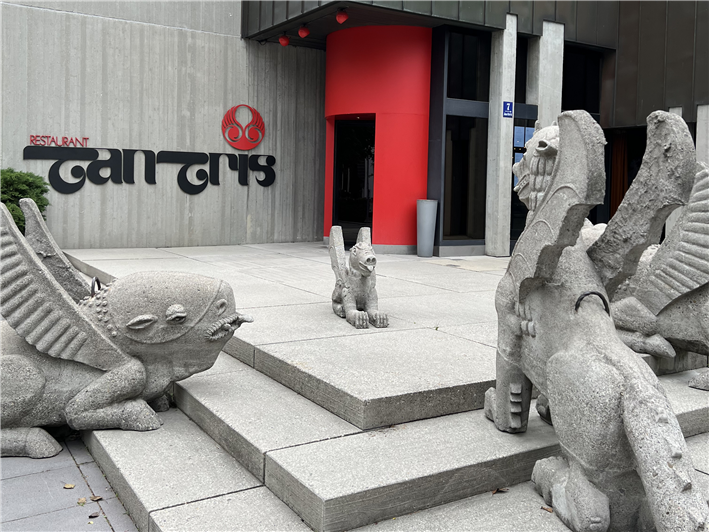
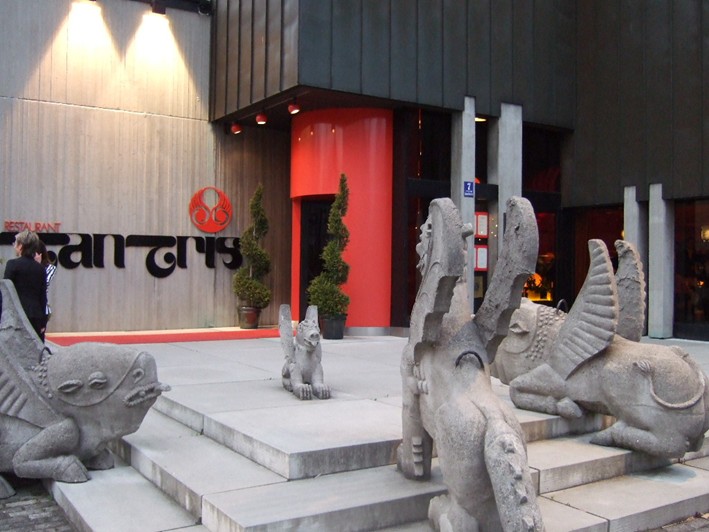
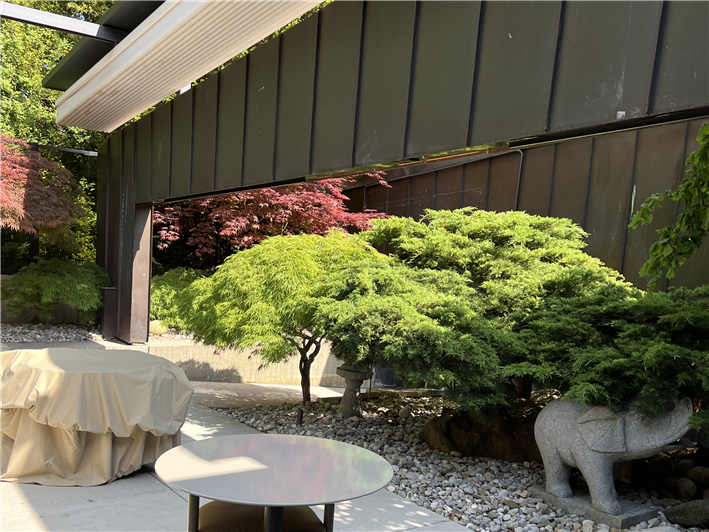
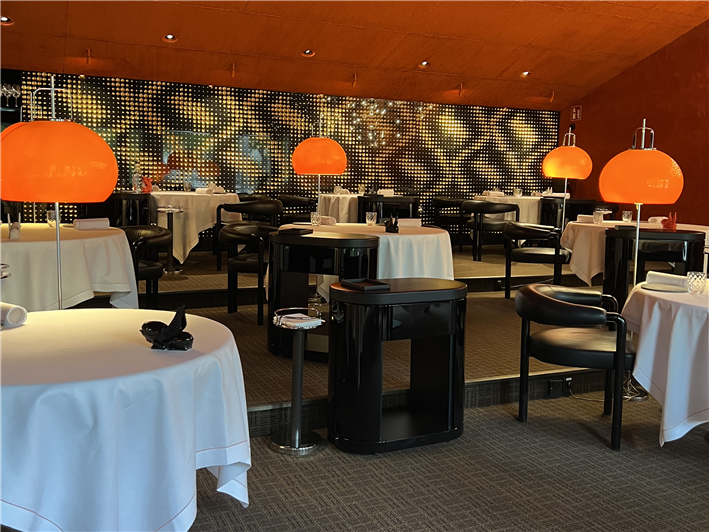
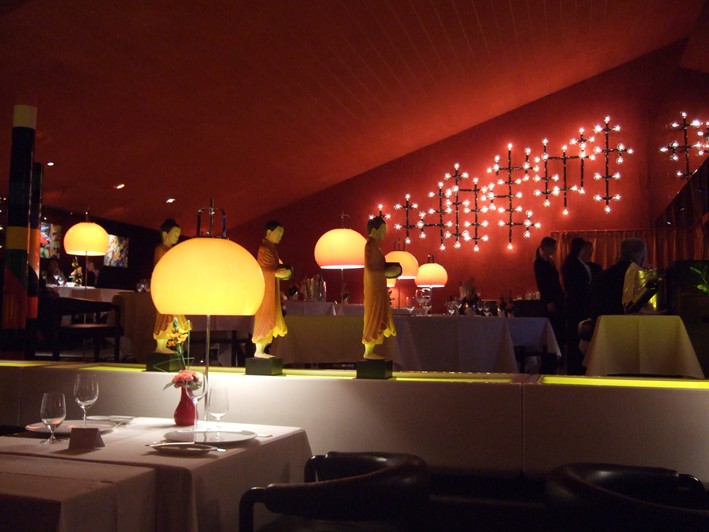
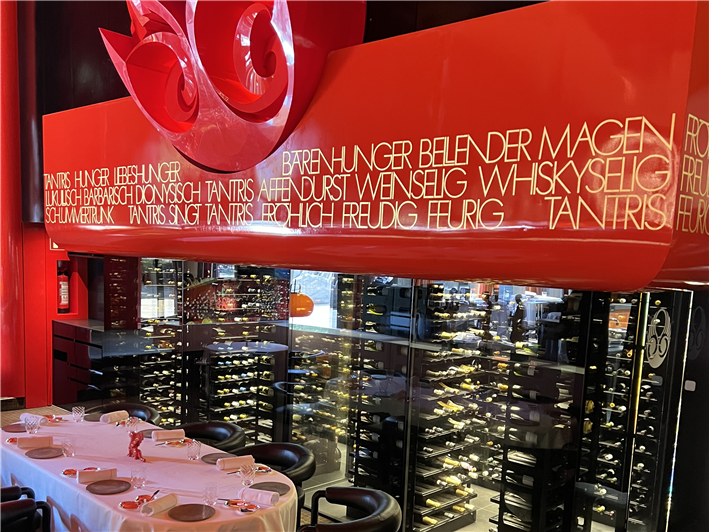
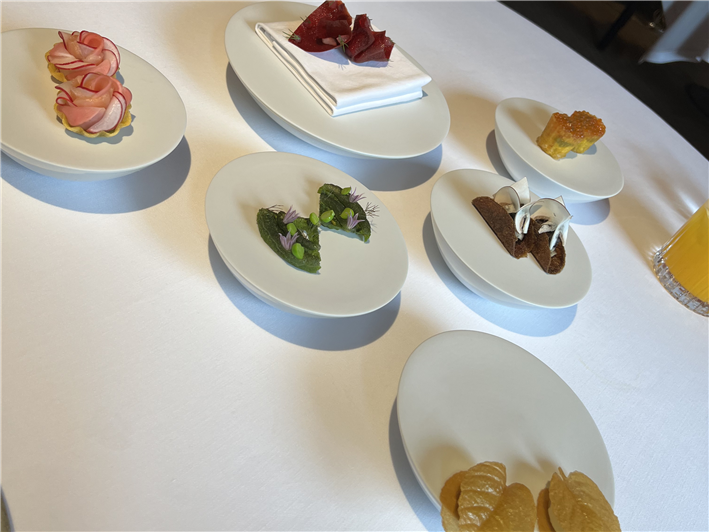
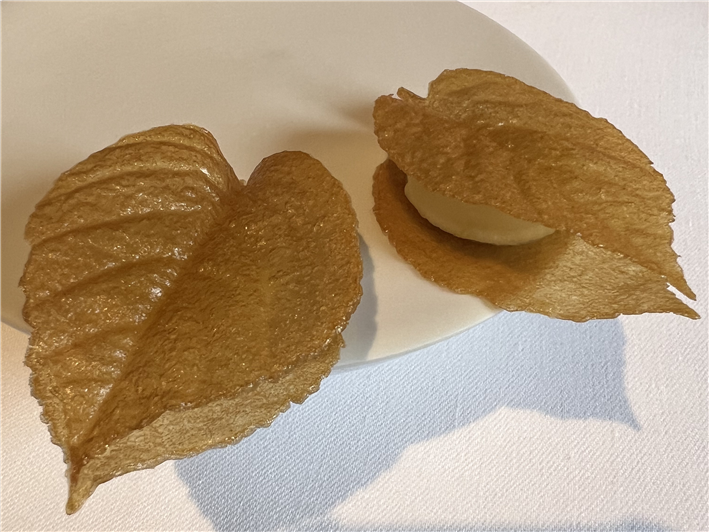
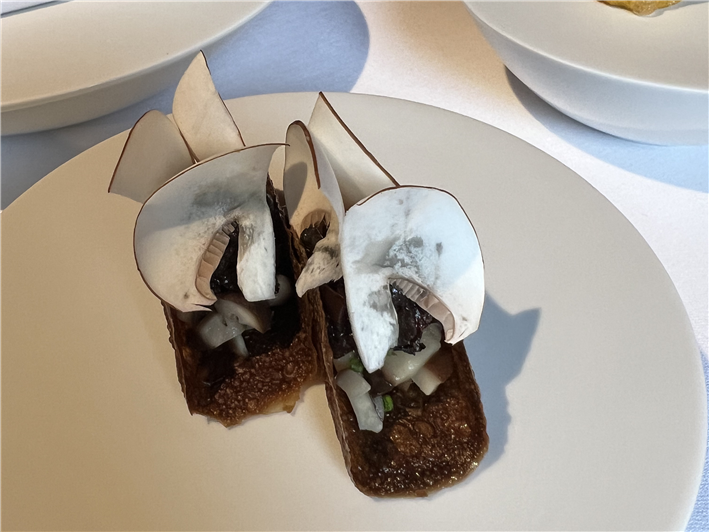
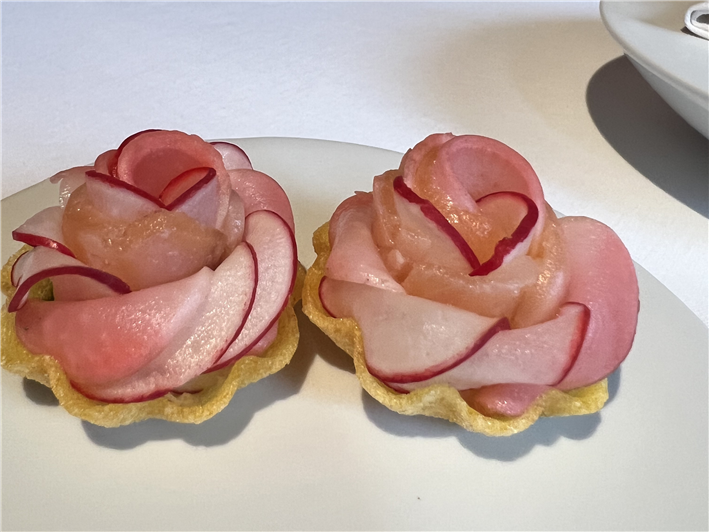
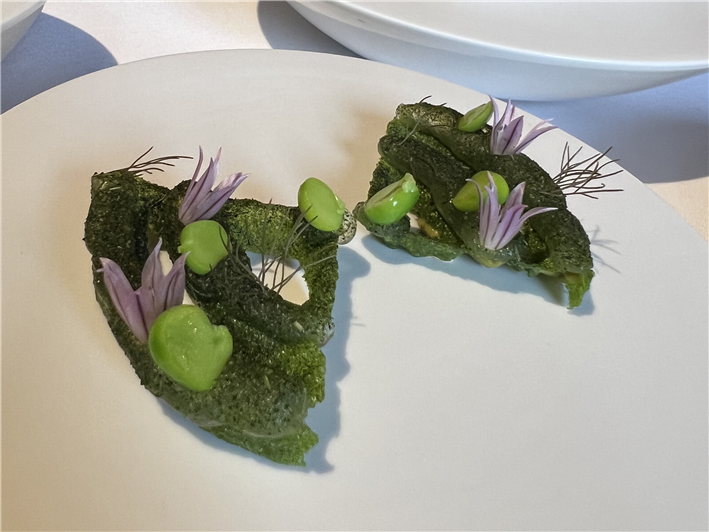
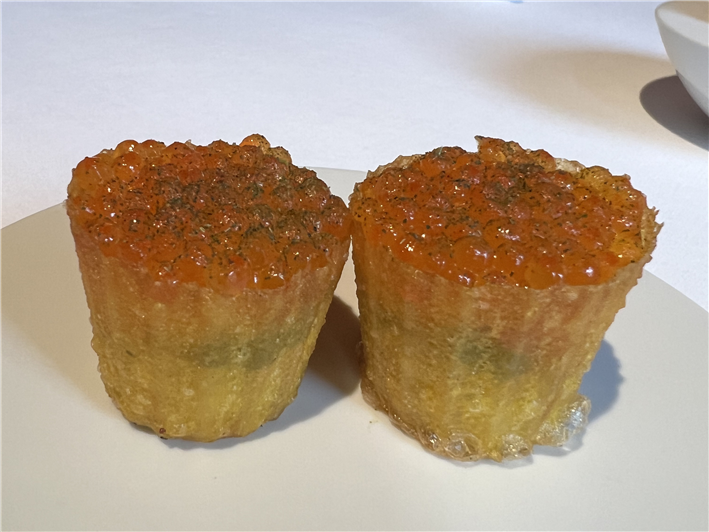
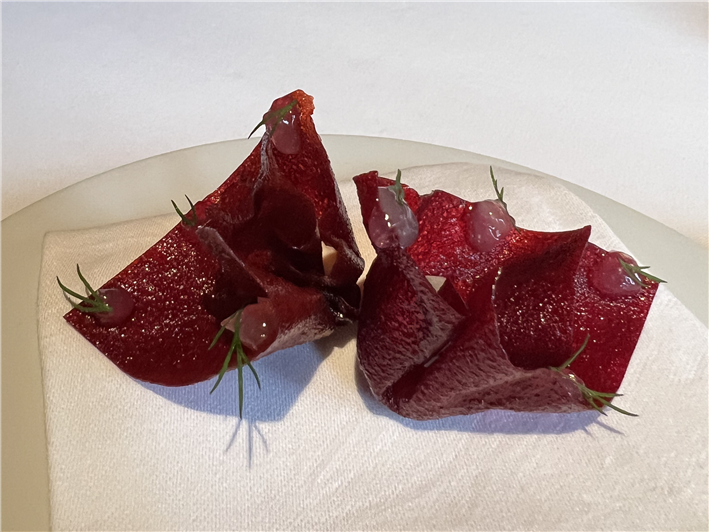
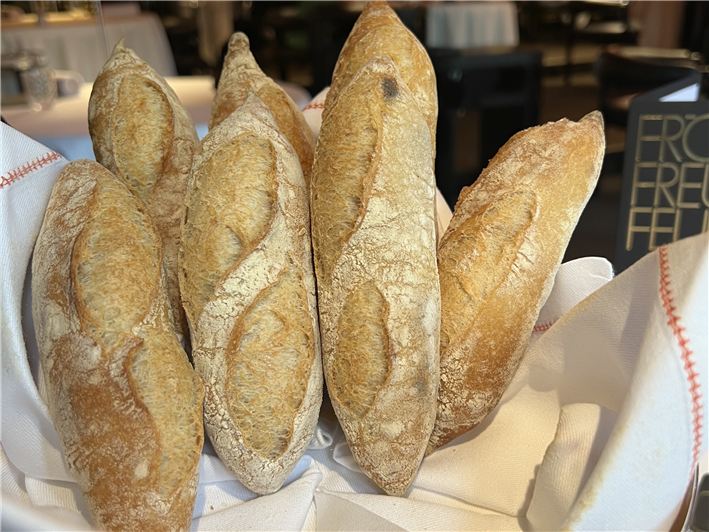
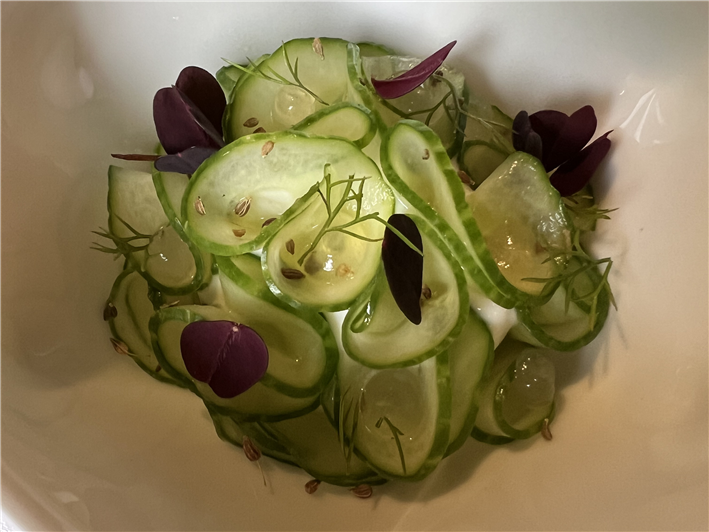
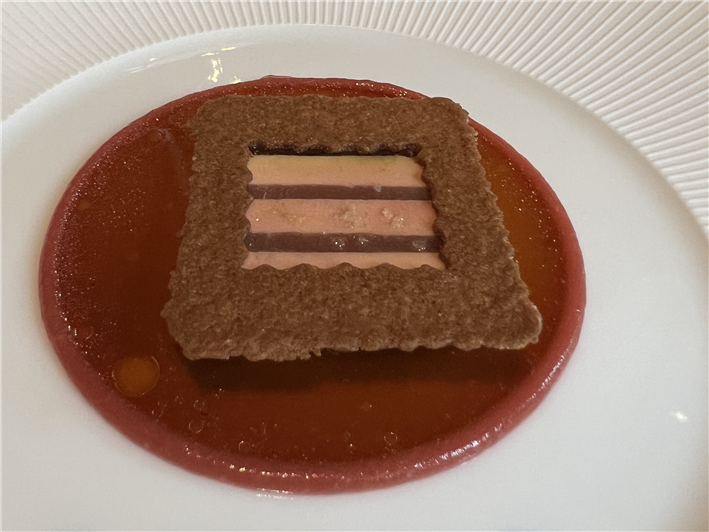
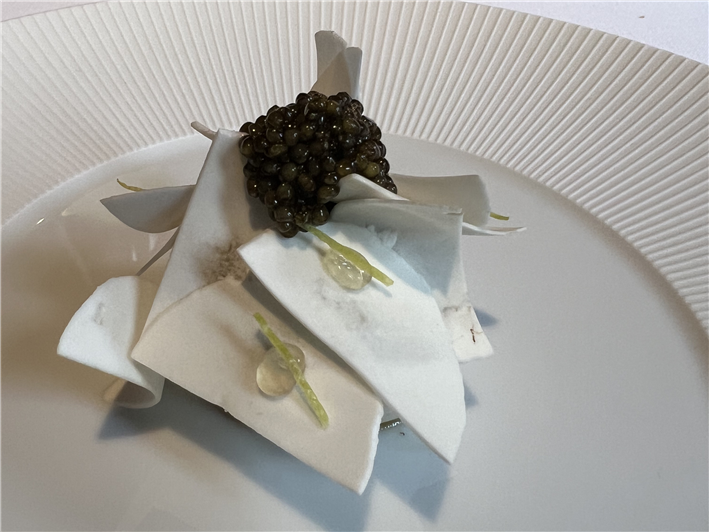
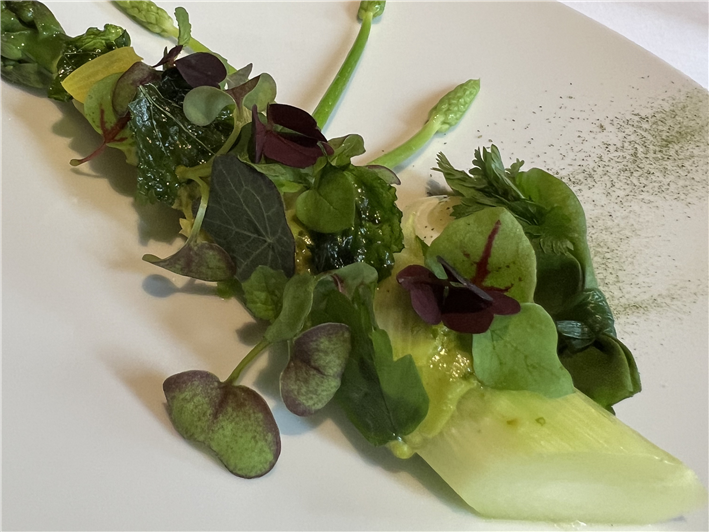
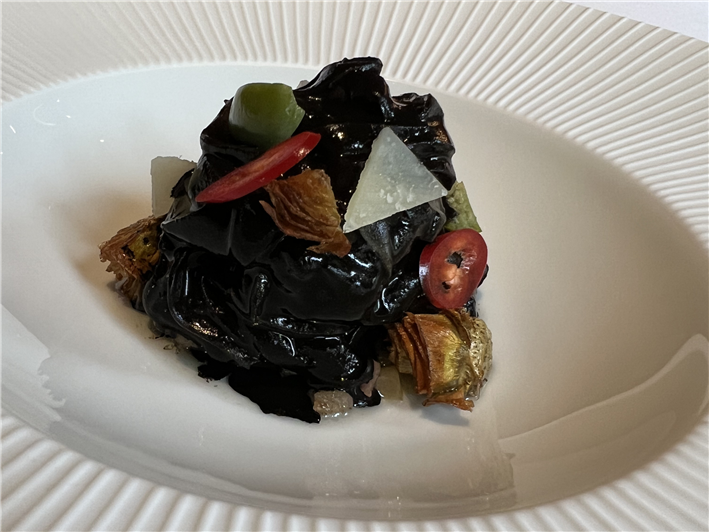
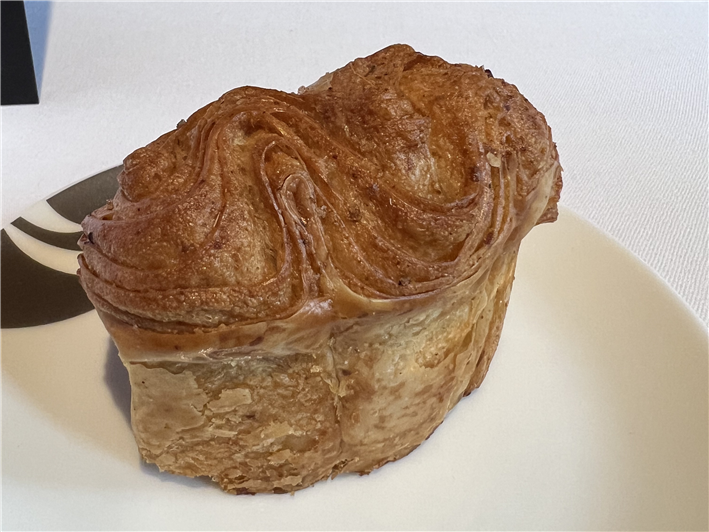

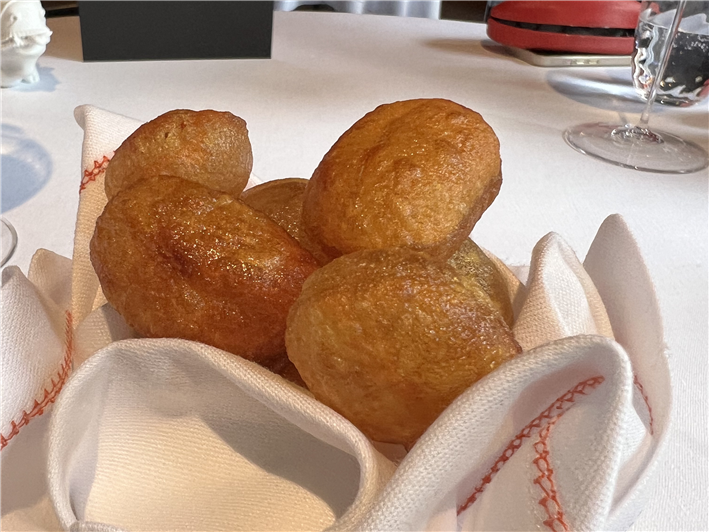


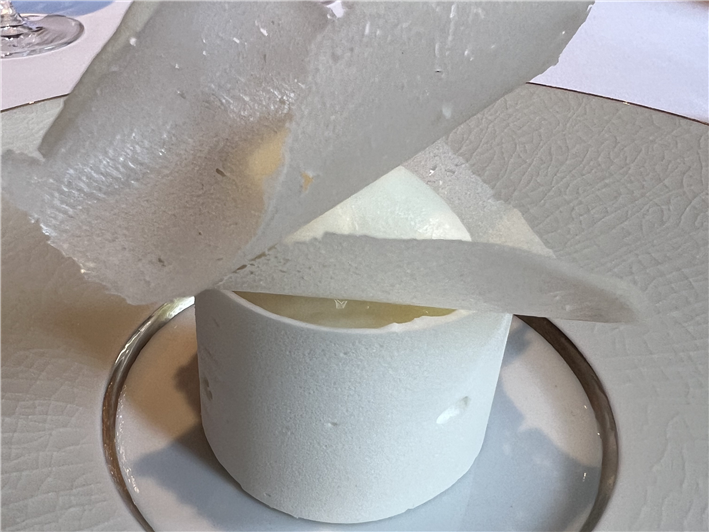


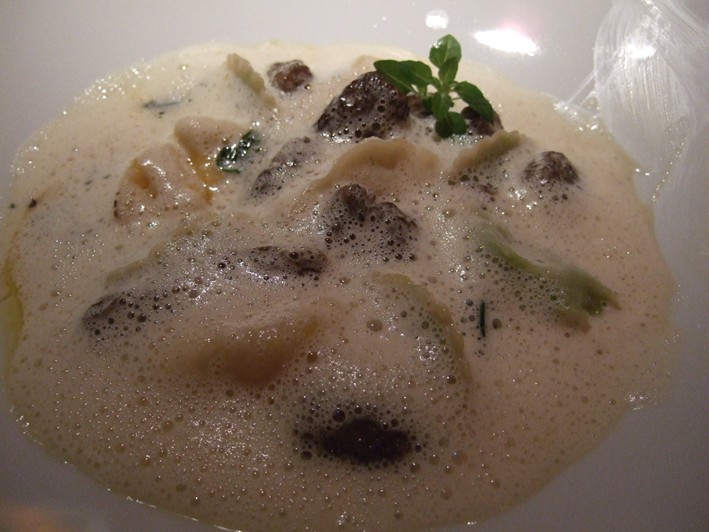
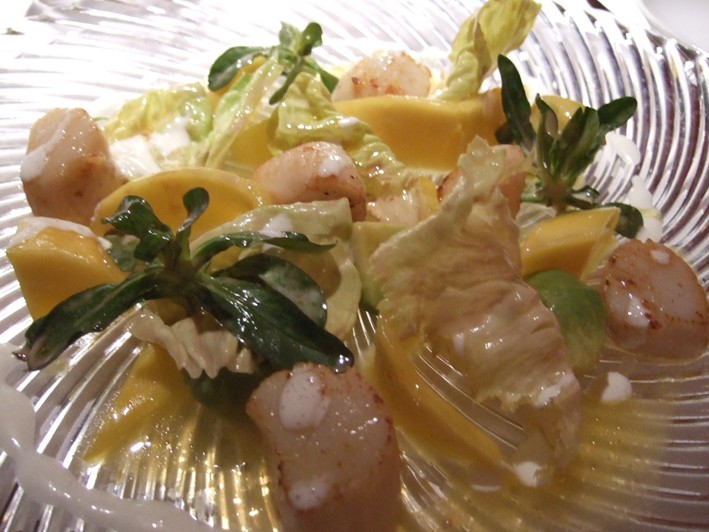
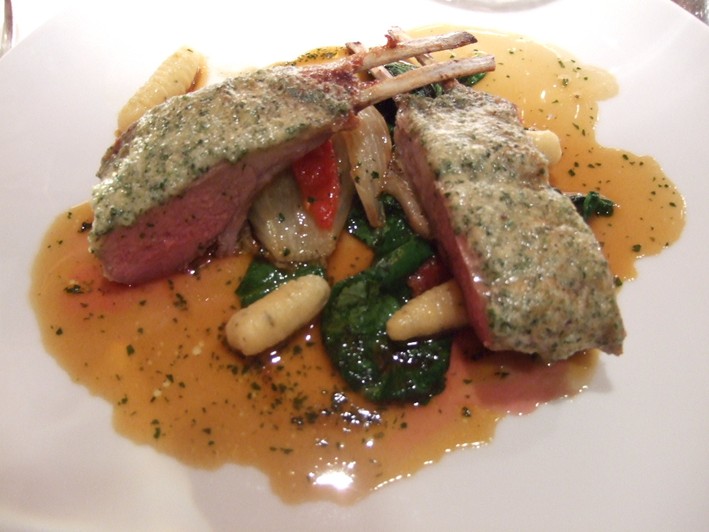


Hubertus and Yvonne Hoffmann
Great review- we both agree! Tantris is a great restaurant with unique interior from the 1970th, excellent food and wine, we used to visit often since 1993. A must try in Munich. Felix did a good choise we his new team.